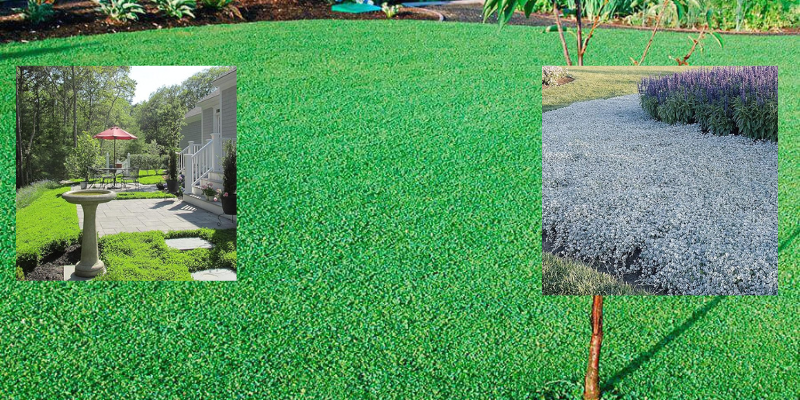Palm Coast Local
Locals Helping Locals

No Mow ground covers
- Details
- Written by: Palm Coast Local
- Parent Category: Business Blog
- Category: Garden & Lawn

The History of Grass Lawns
The concept of manicured grass lawns originated in 17th century England. Wealthy landowners began cultivating closely shorn grass around their estates, showcasing their ability to maintain large, decorative landscapes. These lawns served as symbols of status and were initially practical, offering grazing areas for livestock or clear views around castles.
As time progressed, the aesthetic appeal of green, uniform lawns spread, especially in urban and suburban areas. Lawns became symbols of a tidy, orderly life. However, maintaining such lawns required considerable effort, including regular mowing, watering, and fertilization.
The Rise of Clover and Other Ground Covers
Before the widespread adoption of grass lawns, clover was a popular ground cover. It was valued for its low maintenance, resilience, and ecological benefits. Clover required less mowing, less water, and no chemical fertilizers thanks to its ability to fix nitrogen in the soil. It also attracted pollinators like bees, contributing to a healthier ecosystem.
Why Consider Alternatives to Grass Lawns?
While grass lawns have their charm, they also come with significant downsides. They demand extensive maintenance, water, and chemicals, which can be costly and environmentally harmful. Here’s why alternative ground covers might be a better choice:
1. Low Maintenance:
Ground covers such as frog fruit, white clover, micro clover, purslane, dichondra, ornamental peanut, creeping thyme, and chamomile are excellent low-maintenance alternatives. These plants require less watering, mowing, and care compared to traditional grass lawns.
2. Drought Tolerance:
Many ground covers are adapted to survive with minimal water, making them ideal for dry climates and reducing water consumption.
3. Soil Improvement:
Plants like clover fix nitrogen in the soil, enhancing fertility and reducing the need for chemical fertilizers.
4. Biodiversity:
Ground covers provide habitat and food for pollinators and other beneficial insects, promoting a more vibrant and biodiverse environment. For instance:
- Frog Fruit attracts butterflies and bees.
- White Clover and Micro Clover are favorites of honeybees.
- Purslane appeals to bees and small butterflies.
- Ornamental Peanut attracts bees.
- Creeping Thyme and Chamomile draw bees and butterflies.
5. Aesthetic Appeal:
With their diverse textures, colors, and blooms, ground covers can create a visually stunning landscape, adding beauty and variety to your yard.
How to Transition to Ground Covers
- Evaluate Your Lawn: Identify areas where traditional grass struggles and could benefit from ground covers.
- Select the Right Plants: Choose ground covers suited to your climate, soil, and light conditions.
- Prepare the Soil: Remove existing grass and weeds, then amend the soil if needed.
- Plant and Maintain: Plant your ground covers according to their specific needs, and provide initial care until they establish.
Conclusion
Embracing ground covers like frog fruit, white clover, purslane, dichondra, ornamental peanut, creeping thyme, and chamomile can transform your lawn into a low-maintenance, beautiful, and environmentally friendly oasis. Say goodbye to endless mowing and watering, and hello to a thriving, vibrant landscape that supports pollinators and enhances biodiversity.
Where to buy seeds - ETSY OUTSIDEPRIDE